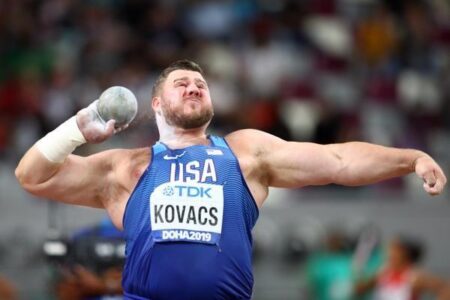In the grueling world of endurance sports, pacing can make or break a competitor’s performance. A new case report published in Frontiers offers fresh insights into how self-selected pacing strategies vary across different Ironman-distance triathlons-specifically 20, 40, and 60 ironman-length events. By closely examining one athlete’s unique approach to these ultra-endurance challenges, the study sheds light on the nuances of energy management and race strategy that could inform training and competition tactics for seasoned triathletes and newcomers alike.
– Examining Unique Pacing Strategies Across Multiple Ironman Distances
Distinct pacing methodologies emerged when analyzing the athlete’s approach across the 20, 40, and 60 Ironman-distance events, underscoring how distance profoundly influences energy distribution and psychological strategy. In the shortest 20-distance triathlon, the competitor adopted an aggressive front-half approach, capitalizing on early bursts of speed and maintaining high intensity, which proved sustainable given the reduced total effort. Conversely, during the 40 and 60 distances, a more measured strategy was evident, with a clear shift towards conserving energy in the initial swim and bike segments followed by incremental increases in pace, especially during the run-highlighting an adaptive, endurance-preserving mindset.
Several key factors were identified as contributing to these divergent pacing styles:
- Physiological Demands: Longer distances necessitated an emphasis on aerobic efficiency and glycogen preservation.
- Mental Stamina: Psychological endurance played a larger role as distance increased, affecting split-second pacing decisions.
- Environmental Conditions: External factors such as temperature and terrain influenced the pacing modulations distinctly across distances.
| Distance | Start Pace Strategy | Mid-Race Modulation | End Pace Tactics |
|---|---|---|---|
| 20 Ironman | Fast and Aggressive | Stable | Maintain High |
| 40 Ironman | Moderate Start | Progressive Increase | Accelerate |
| 60 Ironman | Conservative | Steady with Fluctuations | Strong Finish |
– Insights Into Endurance and Energy Management in Ultra-Distance Triathlons
Effective endurance and energy management strategies are critical factors that distinguish performance across ultra-distance triathlons of varying lengths. The case study reveals that the athlete’s pacing approach significantly adapts based on the race distance, highlighting a clear shift in energy allocation and riding intensity between 20, 40, and 60 Ironman-distance events. Notably, the athlete employs more conservative pacing in longer events, strategically preserving glycogen stores and muscular strength to maintain consistency throughout the course. This underscores the importance of real-time energy regulation to mitigate premature fatigue and optimize overall race completion.
Detailed analysis uncovered distinct physiological and psychological responses that influence pacing choices. Key variables such as heart rate variability, perceived exertion, and fuel intake were meticulously monitored, pointing to a nuanced balance of maintaining effort without triggering energy depletion. The table below summarizes notable differences in average pacing metrics and energy intake across the three race distances, reflecting tailored endurance strategies aligned with the demands of each ultra-endurance challenge.
| Race Distance | Average Pace (% of max effort) | Estimated Energy Intake (kcal/hr) | Heart Rate (% max) |
|---|---|---|---|
| 20 Ironman | 85% | 300 | 75% |
| 40 Ironman | 75% | 280 | 70% |
| 60 Ironman | 65% | 260 | 65% |
- Adaptive Pacing: Slower pace proportional to race length to conserve energy.
- Energy Intake: Gradual reduction corresponding with prolonged event duration.
- Heart Rate Management: Lower average heart rates during longer distances to prevent early fatigue.
– Practical Recommendations for Optimizing Self-Selected Pacing in Ironman Events
To maximize performance during Ironman-distance triathlons, athletes should adopt a flexible pacing strategy that reflects their individual physiological responses and race experience. One critical recommendation is to consistently monitor perceived exertion and adjust intensity based on real-time feedback rather than relying solely on predetermined power or heart rate zones. This adaptive approach mitigates early overexertion, especially in longer events, and helps preserve energy for the crucial final stages. Moreover, incorporating deliberate early race conservatism-particularly in distances of 40km and beyond-can lead to better overall time and reduced risk of fatigue-induced performance collapse.
Additional practical tips include:
- Segment your race into smaller phases with target intensity ranges that vary by distance.
- Use interval training during preparation to simulate pacing fluctuations seen in actual events.
- Prioritize nutrition timing to complement pacing efforts and sustain energy levels.
- Train under varied conditions to foster robust physiological adaptability.
| Distance | Recommended Early Pacing % | Key Focus | ||
|---|---|---|---|---|
| 20 km | 85-90% | Maintain aggressive but steady tempo | ||
| 40 km | 40 km | 80-85% | Conserve energy; emphasize steady pacing | |
| 90 km | 75-80% | Focus on endurance and nutrition timing | ||
| 180 km (Ironman bike) | 70-75% | Prioritize energy preservation for run segment |




